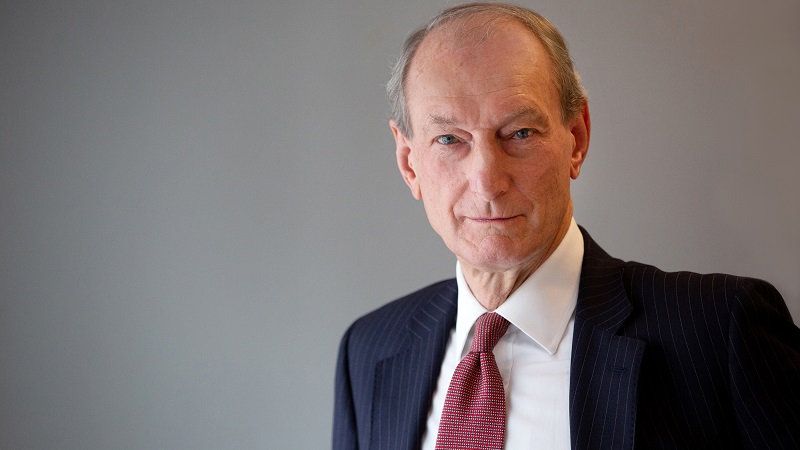By Glyn Owen, Momentum Global IM investment director
The storm brewing in bond markets reached a new intensity last week, with the yield on the US 10-year Treasury bond crossing a milestone of 5%, the highest since before the Global Financial Crisis (GFC). This matters a great deal to financial markets globally, and its impact shouldn’t be underestimated. US Treasuries are the world’s greatest safe-haven asset, and the 10-year yield is the world’s discount rate. When it moves sharply, as now, it reverberates globally and immediately.
To put the move into perspective, the yield was only 0.5% three years ago, a level which seems distant today. That was at the pinnacle of the Fed’s ultra-loose policy regime, with near zero interest rates and massive money printing. We all know what has happened since, and all that remains of what was being hailed as ‘the new normal’ of low interest rates, low inflation and slow growth is the latter – slow growth.
In the intervening period, policy rates have been pushed up from effectively zero in the US to 5.5% today, and bond yields have largely followed the same path. However, the biggest rises in yields were at shorter maturities, with 1-2 year bonds closely matching the Fed Funds rate. Yields on longer dated bonds rose, but by much less, as investors priced in expectations of a sharp slowdown in growth and lower interest rates. Only a few weeks ago, the yield on 10-year Treasuries was 3.7%, compared with well over 5% on short maturities. That led to a deeply inverted yield curve – a reversal of the normal position where yields are higher the longer the maturity, reflecting their higher duration and interest rate risks.
See also: The top-performing UK equity trusts trading on double-digit discounts
The big shift in longer term yields relative to shorter dated has come suddenly and sharply, with a rise of over 100bps in the 10-year yield in a couple of months, whereas shorter term yields have fallen slightly. This pace of change is highly unusual and makes the move up from the low point of the cycle one of the sharpest in history. It has been driven by the surprising resilience of the US economy, the stickiness of inflation, the Fed’s narrative of tighter for longer, and growing concerns about the fiscal situation of the US and debt sustainability.
Biden’s spending splurge, with deficits forecast to run at over 5% of GDP through the rest of this decade, along with a dysfunctional Congress, have begun to alarm markets, faced with the prospect of huge funding requirements, running at around $1.5-2tn per annum, while the Fed continues to withdraw liquidity at the rate of $1tn a year.
As a result, markets have progressively priced out rate cuts until well into 2024, and anticipate restrictive policy for a considerable time, with the huge supply of bonds in prospect expected to keep yields much higher than those we became accustomed to during the post-GFC era. Nearly all the rise in yields has been due to rising real, inflation adjusted, yields; at 2.4% the highest in over 15 years. It results in tightened financial conditions not just in the US but globally through the dollar’s role as the world’s reserve currency and the substantial amount of dollar debt outside the US.
Bond markets around the world inevitably followed the path of the US, and by pushing up the discount rate, valuations of all assets were undermined, with future income flows now less valuable. Perhaps most importantly, it increases stresses in the system, exposes vulnerabilities and heightens the risk of a financial accident. Leverage has become yet more dangerous. It’s a time for caution and careful security selection, and uncertainty has intensified – reflected in the extraordinary volatility in bond yields, with moves of 10-20 bps a day increasingly common.
The term premium – the additional yield which is needed on longer maturities to justify the higher risks and offset the uncertainties around inflation, rates and debt – has moved significantly higher and is positive today (it was irrationally negative as recently as last month and was for most of the last five years). All of this contributes to an increasing likelihood of a sharp economic slowdown or recession in the year ahead.
For now, putting aside the (unquantifiable) risk of a serious escalation of geopolitical instability, bonds have become the principal driver of equities and other risk assets. Bond markets need to stabilise before markets can begin to recover, but with yields of around 5% across the maturity curve, there is now good value available. While cash is attractive as a parking place, it will be necessary to extend duration before too long to lock in the best real yields on offer in safe-haven bonds for over 15 years.
See also: ‘Volatility will likely pick up again’: Fed holds fire again as Powell strikes more dovish tone







